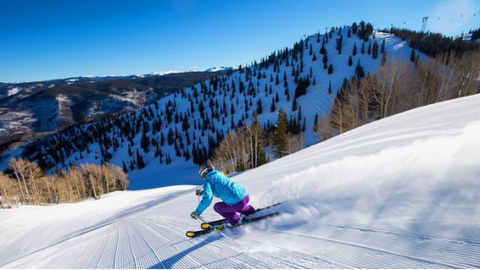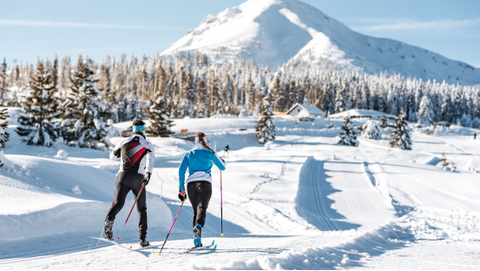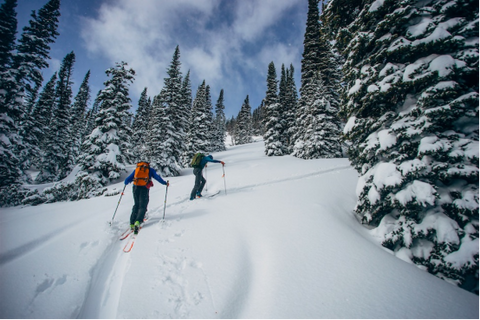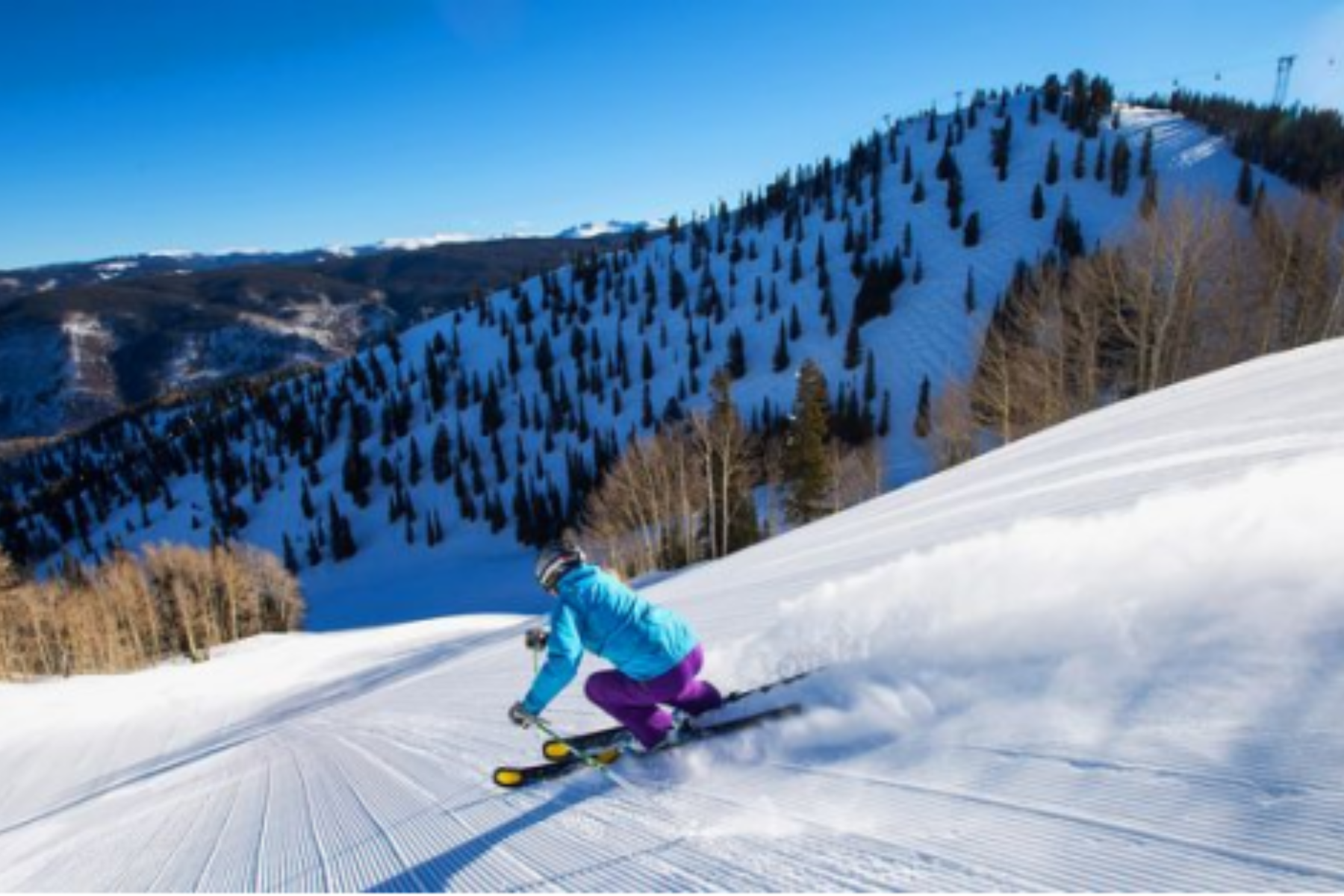Ready to carve the snow and ignite a calorie torching session? Skiing is more than an exhilarating ride down frosty terrains—it's an excellent strategy for fitness during the colder months. But when it comes to the burning question—how many calories does skiing burn?—the numbers can vary. Factors such as your weight, the vigor of your skiing sessions, and even slope conditions play a role. Join us as we delve into the calorie-burning potential of skiing, ensuring you're fully informed for your upcoming snowy escapade.
The basics of skiing and caloric burn
Skiing transcends its reputation as merely a thrilling winter sport by doubling as a potent calorie-burning activity. Yet, the precise energy expenditure during skiing is not a one-size-fits-all figure; it's influenced by a myriad of factors. Hence, delving into the specifics of "how many calories does skiing burn" necessitates a foundational understanding of the interplay between skiing dynamics and caloric consumption. By grasping these essentials, you're better equipped to optimize your skiing sessions, aligning them more closely with your fitness aspirations and ensuring that every glide and turn contributes meaningfully to your health objectives.

Factors affecting caloric expenditure
- Weight: Heavier individuals tend to burn more calories due to the increased energy required to move their body mass.
- Intensity: The more vigorously you ski, the higher your caloric burn. This includes skiing at faster speeds and incorporating more challenging techniques.
- Skill Level: Beginners may burn more calories due to the inefficiency of their movements, while advanced skiers might expend more energy performing complex maneuvers and tackling difficult slopes.
- Terrain: Steeper and more rugged terrain requires more muscle engagement and energy expenditure.
- Conditions: Skiing in fresh, powdery snow or in adverse weather conditions can increase the effort needed, thus upping the caloric burn.
Types of skiing and their unique demands
Caloric Burn: Moderate to high, depending on speed and slope difficulty.
Key Factors: Heavily influenced by the intensity of runs and the weight of the skier. Downhill skiing on steeper slopes or at faster speeds increases caloric expenditure.
Caloric Burn: High, considered one of the top calorie-burning exercises.
Key Factors: The constant motion and need to propel oneself forward over flat or rolling terrain make this type of skiing particularly energy-intensive.
Caloric Burn: Very high, due to the combination of skiing and hiking.
Key Factors: The effort required to hike up slopes before skiing down them, often while carrying additional gear, significantly increases the total calorie burn.
With each type of skiing presenting its distinct challenges and benefits, skiing emerges as a versatile sport accommodating diverse fitness levels and preferences. Now, turning to the next part: how many calories does skiing burn in different types, precisely?
How many calories do you burn downhill skiing?
Downhill skiing isn't just an invigorating winter pursuit; it's also a robust calorie-burning activity. However, the number of calories burned while downhill skiing can fluctuate significantly, influenced by factors such as the skier's weight, the session's intensity, the slope's difficulty, and the skier's unique style. Here, we analyze how these variables affect caloric expenditure.

Average caloric burn by weight category
The amount of energy expended in downhill skiing is significantly influenced by the skier's body weight. Here's an outline of the average caloric burn per hour for different weight categories:
- Lightweight (125 lbs / ~56 kg): Approximately 180 to 300 calories per hour.
- Medium weight (155 lbs / ~70 kg): Approximately 280 to 420 calories per hour.
- Heavyweight (185 lbs / ~84 kg): Approximately 330 to 500 calories per hour.
These estimates provide a baseline; however, actual caloric burn will depend on the intensity of the skiing and other factors discussed below.
Factors influencing calorie consumption
- Intensity of Runs: The more vigorously you ski, the higher the calorie burn. High-intensity skiing, where you're pushing yourself hard on every run, significantly increases energy expenditure compared to more leisurely skiing.
- Slope Difficulty: More challenging slopes require greater effort to navigate, increasing the caloric burn. Steep inclines demand more muscular engagement, especially from the legs, to maintain control and speed, leading to higher energy expenditure.
- Skiing Style:
- Aggressive Carving: This technique entails executing rapid, precise turns at elevated speeds, demanding considerable skill and physical effort, thereby amplifying calorie burn.
- Leisurely Runs: Opting for a more laid-back skiing experience, characterized by mellow slopes and fewer turns, reduces energy expenditure. Nonetheless, even leisurely skiing can serve as a beneficial workout, particularly suitable for beginners or individuals seeking a relaxed day on the slopes.
Comprehending these factors empowers skiers of every proficiency level to customize their skiing endeavors to align with their fitness objectives. Whether aiming to optimize calorie burn or merely relish a day amidst the picturesque winter landscape, this understanding ensures a fulfilling skiing experience for all.
How many calories do you burn cross-country skiing?
Cross-country skiing, known for its demanding nature, not only presents a substantial cardiovascular challenge but also activates a diverse range of muscle groups, contributing to its high caloric burn rate.
Caloric burn potential of cross-country skiing
On average, participants can burn between 400 to 900 calories per hour, a range that underscores its intensity and effectiveness as a workout regimen. The substantial variance in caloric burn is influenced by several factors, including the skier's weight, intensity of the effort, and specific skiing techniques used.

Impact of terrain
The terrain over which one skis plays a critical role in determining the overall energy expenditure:
- Flat Terrain: While seemingly easier, flat terrain demands constant motion to maintain momentum, ensuring a steady caloric burn.
- Rolling Terrain: This offers a mix of inclines and declines, requiring bursts of energy to ascend and technical skill to navigate efficiently, leading to increased calorie usage.
- Steep Terrain: Skiing on steep terrain significantly raises the caloric expenditure due to the heightened effort needed for both ascending and maintaining control during descents.
Influence of technique
The technique adopted in cross-country skiing also affects how many calories are burned, with two primary styles being prevalent:
- Classic Skiing: This traditional form involves a straight-line motion in pre-set tracks. It's highly efficient and can be less intense than skate skiing, but still offers a considerable calorie burn due to the endurance nature of the activity.
- Skate Skiing: Known for its similarity to ice skating, skate skiing involves pushing off the edge of each ski in a V-shape to move forward. This technique typically requires more effort than classic skiing, leading to a higher caloric burn. Skate skiing's intense, repetitive lateral movements engage more muscle groups, amplifying its fitness benefits.
Cross-country skiing's status as a premier caloric challenger is well-deserved, given its ability to offer a high-intensity cardiovascular workout that efficiently burns calories. Whether navigating flat, rolling, or steep terrains, or choosing between classic and skate skiing techniques, enthusiasts are guaranteed a substantial workout that can significantly contribute to overall physical fitness and weight management goals.
How many calories do you burn backcountry skiing?
Backcountry skiing merges the thrill of downhill runs with the physical exertion of uphill hiking or "skinning," resulting in a holistic workout that incinerates a notable amount of calories.

Caloric demands of backcountry skiing
- Uphill Skinning: The ascent, or skinning, is where the majority of calories are burned during backcountry skiing. This activity involves attaching skins to the bottom of skis to provide traction, allowing skiers to walk uphill. It's akin to a rigorous hike in snow, often with a heavy pack, and can burn upwards of 600 to 1,000 calories per hour, depending on the slope's steepness and the weight of the equipment carried.
- The Descent: While the downhill portion of backcountry skiing might seem less physically demanding than the ascent, it still requires significant energy expenditure. Navigating unpatrolled, often unpredictable terrain demands constant muscular engagement for balance, control, and maneuvering, contributing to the overall caloric burn. Although the calorie burn rate may decrease compared to the uphill effort, the intensity of the descent ensures that the activity remains a substantial workout.
Factors increasing caloric burn
- Carrying Equipment: Backcountry skiers often carry backpacks loaded with safety equipment (such as avalanche transceivers, shovels, and probes), food, water, and sometimes additional gear like climbing ropes. This added weight increases the energy required for both the ascent and descent, thereby elevating the caloric burn.
- Navigating Unpatrolled Terrain: The challenge of moving through unpatrolled, and often complex, terrain adds to the physical exertion of backcountry skiing. Skiers must constantly adjust their technique and path, requiring more energy than skiing on groomed resort trails. This not only increases calorie expenditure but also enhances the workout's intensity by engaging a wider range of muscle groups.
For adventure seekers looking for a challenging workout, backcountry skiing provides an unmatched chance to push boundaries and immerse oneself in the wonders of the great outdoors.
Happy skiing for health and joy
Engaging in skiing not only catapults you into breathtaking winter sceneries but also ignites a curiosity about the caloric impact of this activity, specifically "how many calories does skiing burn?" This unique blend of fun and physical exertion elevates skiing from a simple leisure activity to a significant contributor to physical fitness. It transcends the realm of mere recreation, embodying a commitment to an active lifestyle and wellness. By incorporating skiing into your routine, it becomes not just a seasonal pastime but a foundational pillar in your pursuit of a healthier, more vibrant life.
 EN
EN JA
JA






